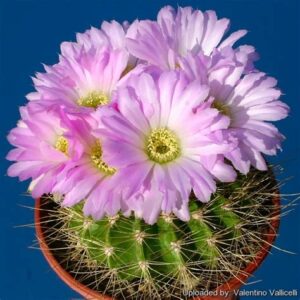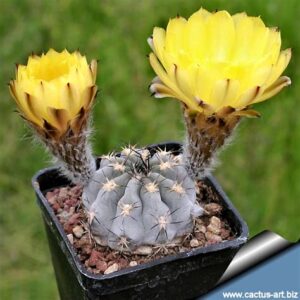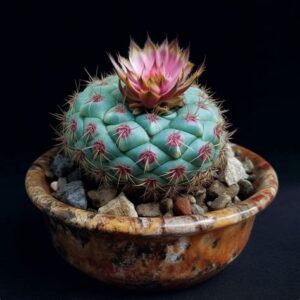The Acanthocalycium genus is a fascinating group of cacti that has captivated the interests of horticulturists and plant enthusiasts alike. Known for their unique aesthetics and resilient nature, these cacti bring a blend of beauty and functionality to any garden or collection. As we delve into the intricacies of the Acanthocalycium genus, we will explore its taxonomy, characteristics, growth requirements, care, and even their wider applications in landscaping and indoor environments.
Understanding the taxonomy and diversity of the Acanthocalycium cactus genus provides a solid foundation for appreciating these remarkable plants. Acanthocalycium belongs to the Cactaceae family, which encompasses all cacti. The genus itself is primarily native to regions of South America, particularly Argentina and Bolivia, where they thrive in arid climates. They typically grow in mountainous or rocky terrains, allowing them to adapt exceptionally well to dry environments.
Taxonomically, Acanthocalycium consists of various species, each showcasing distinctive characteristics. Among the most prominent species are Acanthocalycium thionanthum and Acanthocalycium glaucum. These species are heralded not only for their visual appeal but also for their remarkable adaptability. The genus derives its name from the Greek words “akanthos,” meaning thorn, and “kalyx,” meaning cup, which eloquently describes the spiny structures adorning the flowers. The stunning blooms vary in color, including magenta, yellow, and white, and typically emerge in vibrant clusters.
Another noteworthy aspect of Acanthocalycium is its morphological diversity. The plants generally feature globular or cylindrical shapes, displaying an impressive array of spines that can be short, long, or even hairy. This diversity in morphology contributes to their allure, making them highly sought after for both collection and display purposes. Understanding these visual characteristics enables enthusiasts to recognize and differentiate between species effectively.
As with any living organism, growth requirements play a critical role in the thriving of Acanthocalycium species. These cacti are adept at surviving in harsh conditions, yet they do have specific needs that should be met for optimal growth. Acanthocalycium thrives best in well-draining soil, preferably a cactus mix or a blend incorporating sand or perlite, to prevent water retention, which could lead to root rot.
The ideal light condition for Acanthocalycium is bright, indirect sunlight. However, they can tolerate direct sunlight, especially when acclimatized to it. It is important to gradually expose them to increased light to prevent sunburn. These cacti prefer warmer temperatures, thriving in environments that range from 70°F to 100°F during the day, but they should be sheltered from frost as prolonged exposure to cold temperatures can be detrimental.
When it comes to watering Acanthocalycium, the general rule is “less is more.” Overwatering is the primary cause of many cactus-related issues. The best approach is to water the plant thoroughly, allowing excess water to drain, then waiting for the soil to dry completely before the next watering. This typically translates to watering every two to three weeks during the active growing season in spring and summer, tapering off in the fall and winter.
Fertilization is another consideration for promoting healthy growth in Acanthocalycium. Using a diluted, balanced fertilization solution during the growing season can provide essential nutrients. However, it is crucial to avoid fertilization during the dormant winter months, as this can disrupt the natural growth cycle of the cactus.
Propagation of the Acanthocalycium genus can occur through seeds or offsets. Seed propagation requires patience, as germination can take several weeks. For those new to growing cacti, offsets, when available, may be the easier route. Carefully separating offsets from the parent plant and allowing the cut surfaces to callous for a few days before planting can increase the chances of successful propagation.
Caring for Acanthocalycium involves attentive observation of their growth patterns and conditions. Typical pests, such as mealybugs and spider mites, can sometimes become problematic. Regular inspection of the plants can help identify issues early. If pests are found, treating them with insecticidal soap or neem oil can be effective. Fungal issues can also arise in overly damp conditions; therefore, maintaining adequate drainage and air circulation is paramount.
The versatility of Acanthocalycium extends beyond mere aesthetics. Their ability to thrive in arid conditions makes them suitable choices for xeriscaping, which emphasizes water conservation through drought-resistant plants. Creating a stunning rock garden featuring Acanthocalycium cacti alongside other desert-dwelling flora can evoke a natural landscape that is both visually enchanting and eco-friendly.
Furthermore, Acanthocalycium cacti serve as exceptional indoor plants. Their compact size and unique features make them fitting additions to home décor. Placed strategically in bright, sunny windows, they can thrive indoors, requiring minimal care. In addition to aesthetic appeal, they enhance air quality, contributing positively to indoor environments. The low maintenance needs of Acanthocalycium also make them favorable for individuals new to plant care.
Taking care of the environmental benefits offered by the Acanthocalycium genus cannot be understated. By incorporating these cacti into gardens, individuals help promote biodiversity and support pollinator populations. The blossoms of Acanthocalycium attract various pollinator species, including bees and butterflies, contributing to the overall ecological balance.
In conclusion, the Acanthocalycium genus represents a unique and vital subset of the cactus family. With its intriguing taxonomy, striking beauty, and adaptability to various environments, this group of cacti is worthy of exploration and appreciation. By providing suitable growth conditions and care, enthusiasts can cultivate these remarkable plants, enjoying not only their aesthetic value but also their ecological benefits. Whether as part of a stunning outdoor landscape or as eye-catching indoor plants, Acanthocalycium cacti exemplify the remarkable resilience and beauty found within the cacti family.





Leave a Comment